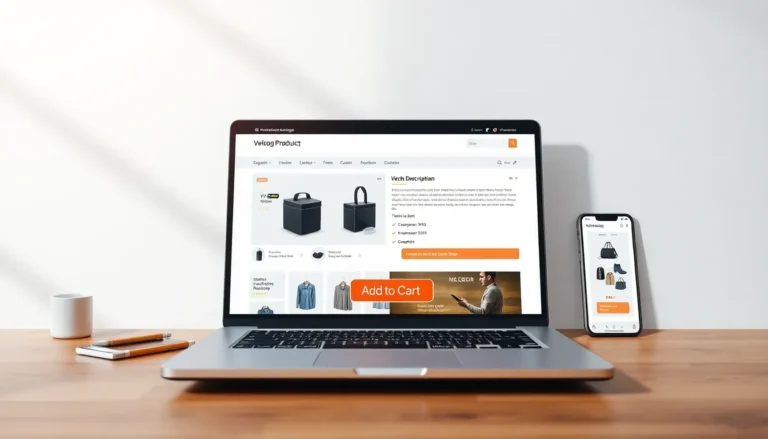Table of Contents
ToggleEver wandered into a store and marveled at how the awesome new gadget caught your eye, only to realize the interface was as welcoming as a porcupine at a petting zoo? That’s where the magic of design comes in. From aesthetics to functionality, product design and UX design play crucial roles in creating memorable experiences. But wait, aren’t they the same thing? Spoiler alert: they’re not. So buckle up as we unravel the tapestry of creativity and usability woven into product and UX design, revealing their distinct yet intertwined paths.
Defining Product Design

Product design is the art and science of creating items that are not only visually appealing but also functional and user-oriented. It encompasses everything from hardware components to overall aesthetics, focusing on the full lifecycle of a product. In this realm, designers employ a combination of engineering principles and creative flair to bring products to life.
Key Elements of Product Design
When delving into product design, several key elements surface:
- Functionality: How well does the product perform its intended function?
- Aesthetics: Is it pleasing to the eye? The visual appeal can significantly influence a buyer’s decision.
- Usability: Can users interact with the product intuitively? A good product should encourage ease of use.
- Sustainability: In our eco-conscious era, ensuring the product is environmentally friendly is critical.
Examples of Product Design
Think of the iPhone. With its sleek design and innovative features, Apple revolutionized smartphones. Another notable example is the Nest Thermostat, which blends modern aesthetics with functionality, allowing users to control their homes efficiently. Both showcase how product design integrates visuals and usability into tangible items.
Defining UX Design
User experience (UX) design, on the other hand, is a domain primarily focused on the end-user’s interaction with a product. It dives deep into understanding how users feel when interacting with a service or system. UX design extends beyond visual elements to encompass the entire journey a user takes, everything from the initial contact through engagement, feedback, and beyond.
Key Principles of UX Design
Several principles guide UX design:
- User-Centered Design: UX design revolves around the needs and wants of users. Research is essential.
- Accessibility: Can everyone use the product easily? Accessibility ensures that all users, regardless of ability, can interact with the design.
- Empathy: Understanding the user’s perspective leads to better design solutions.
- Feedback: Gathering user input is crucial for improving and iterating designs.
Examples of UX Design
Consider a website like Airbnb where navigation is intuitive, enhancing user satisfaction while booking. Or think about Spotify, which offers seamless music discovery through clear interfaces and personalized recommendations, emphasizing how UX design shapes the user’s experience.
Comparative Analysis: Product Design Vs UX Design
Now that we have clear definitions, let’s explore how product design and UX design diverge and converge. While product design focuses on the tangible aspects of a product, such as its form and functionality, UX design is predominantly about how users interact with these products and their overall satisfaction.
For instance, a product designer may work on a sleek coffee maker, ensuring it looks good and brews coffee effectively. In contrast, the UX designer would strategize how easily a user can set the timer, clean it, or even change coffee settings. So, the two disciplines serve different roles yet aim for a harmonious user experience.
Collaboration Between Product Designers and UX Designers
The best products emerge when product designers and UX designers collaborate closely. By merging their skills, they can create items that not only look good but also operate seamlessly. Regular meetings, joint brainstorming sessions, and shared feedback loops are pivotal for this synergy.
For example, imagine a tech gadget designed with attention to detail but lacking user-friendly interfaces. By working together, designers can refine both the aesthetics and the overall experience, leading to a product that resonates well with users.
The Importance of Both Disciplines in The Product Development Process
Both disciplines are critical in the product development lifecycle. Product design lays down the groundwork through structural and visual elements, while UX design enhances the journey. This synergy helps reduce errors, enhances functionality, and eventually drives customer satisfaction.
Investing in both areas not only elevates a product’s market presence but also builds brand loyalty. Companies that prioritize these aspects often see a boost in user engagement and overall success.





